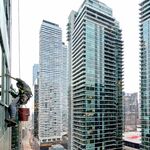They still need approvals for use in NA. My original question includes the whole world? Which train has adopted bbr's battery system? And how sure are we that we will be going with bbr in the first place regardless of the recent politics.
It's their standard electric gear whether Metro, Tram, Commuter Rail, People Mover, or Monorail. Nearly every city with a modern electric BBD product, including Toronto, uses those modules. Siemens, Alstom, etc. also have very similar standardized parts across their various product lines.
The battery piece is scaled from minimal (keep the lights on, and operate emergency equipment), to medium (creep to a nearby station in power failure), to large (normal operations in catenary gaps).
The longest unpowered stretch I'm aware of is about 2km in Birmingham UK. Toronto segments would be closer to 50m to get around upgrading a few bridges or Union Station if costly to electrify. Overhead line will still exist to direct the pantograph under the obstruction, it just won't be a powered line.
They still need approvals for use in NA.
Yes, all companies proposing vehicles for GO RER will need to go through safety, weather, and other testing. There is no off-the-shelf vehicle which is fiscally efficient and hits Metrolinx minimum performance specs. It will be a customized to hit spec (and not beyond) regardless of the fiscally optimized battery bank size.
For scale, TTC ordered 480 Toronto Rockets, and MTA rarely buys more than 500 units in an order, but if the vendor chooses EMU's then they'll be producing about 90 units for GO RER. Shaving a tiny fraction off the production cost will be a huge savings; I can all but guarantee it'll be a customized design.




